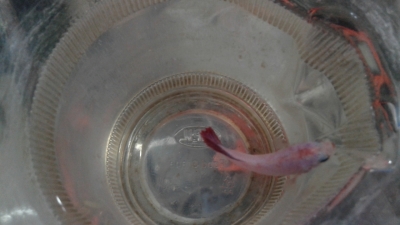Blue Panda Guppies have become a prized gem in the aquarium hobby, captivating enthusiasts with their unique coloration and graceful demeanor. But how did these striking fish rise to prominence? Here’s an exploration of their evolution, from their origins to their current status as one of the most sought-after guppy varieties.
The Blue Panda Guppy is a selectively bred variety, developed through generations of breeding to enhance its signature blue and black patterns. These traits were cultivated from wild guppies, which naturally exhibit muted colors, making the vibrant hues of Blue Pandas a testament to the artistry of aquarist breeding.
The evolution of Blue Panda Guppies is rooted in meticulous selective breeding. Breeders focused on enhancing specific traits, such as the vivid blue coloration, the panda-like black markings, and the compact size. This process involved pairing guppies with desirable traits over multiple generations to achieve the striking appearance we see today.
Blue Panda Guppies gained popularity due to their aesthetic appeal and adaptability. Their unique coloration and peaceful temperament made them a favorite among beginners and experienced aquarists alike. The growing interest in ornamental fish and nano aquariums further boosted their demand.
Blue Panda Guppies have contributed significantly to the aquarium hobby by showcasing the possibilities of selective breeding. Their evolution has inspired aquarists to explore other innovative varieties and create stunning aquarium setups centered around their vibrant appearance.
Despite their popularity, Blue Panda Guppies remain relatively rare. Maintaining their unique patterns requires careful breeding to avoid genetic issues or dilution of desirable traits. This challenge adds to their value and appeal among collectors.
Today, Blue Panda Guppies are featured prominently in aquascapes and nano tanks, where their striking colors can stand out. As the aquarium hobby continues to evolve, so too will the breeding techniques and innovations surrounding these guppies, ensuring they remain a staple for years to come.
The journey of Blue Panda Guppies from their wild ancestors to their status as a prized aquarium variety highlights the ingenuity and passion of aquarists. Their evolution represents a blend of natural beauty and human creativity, making them a symbol of innovation in the aquarium hobby.
Blue Topaz Guppies are highly sought after for their shimmering blue tones, making them a favorite among hobbyists. Breeding these fish to preserve th
Blue Grass Guppies stand out among the various grass guppy strains due to their distinct coloration and patterns. Their iridescent blue hues, coupled
Red Moscow Guppies are prized for their deep, uniform red coloration. However, maintaining and enhancing their vibrant hue requires careful breeding,
Introduction The Blue Mosaic Guppy is a visually stunning fish known for its intricate blue patterns and flowing tail. These guppies are highly sough
Blue Grass Guppies are renowned for their mesmerizing hues and intricate patterns, but maintaining and enhancing their vivid coloration requires caref
Introduction Yellow Mosaic Guppies are known for their striking yellow hues and intricate mosaic tail patterns. To maintain and enhance their vibrant
Blue Dragon Guppies are renowned for their vibrant blue hues and intricate patterns, making them a prized addition to any aquarium. However, choosing
Introduction Blue Moscow Guppies are a highly sought-after strain known for their deep, uniform blue coloration. Their genetics play a crucial role i
Blue Mosaic Guppies are admired for their striking blue hues and intricate mosaic patterns, making them a favorite among guppy enthusiasts. But what d
Introduction Red Dragon Guppies are celebrated for their striking coloration and intricate patterns, making them a favorite among aquarium
Blue Mosaic Guppies are known for their vivid blue hues and intricate patterns, making them a prized addition to any aquarium. To maintain and enhance
German Guppies are highly sought after by aquarists due to their distinctive features, vibrant colors, and superior genetics. Whether you're a seasone

Price: N/A

Price: N/A

Price: N/A

Price: N/A

Price: N/A

Price: N/A

Price: N/A

Price: N/A

Price: N/A

Price: 3500 Tk